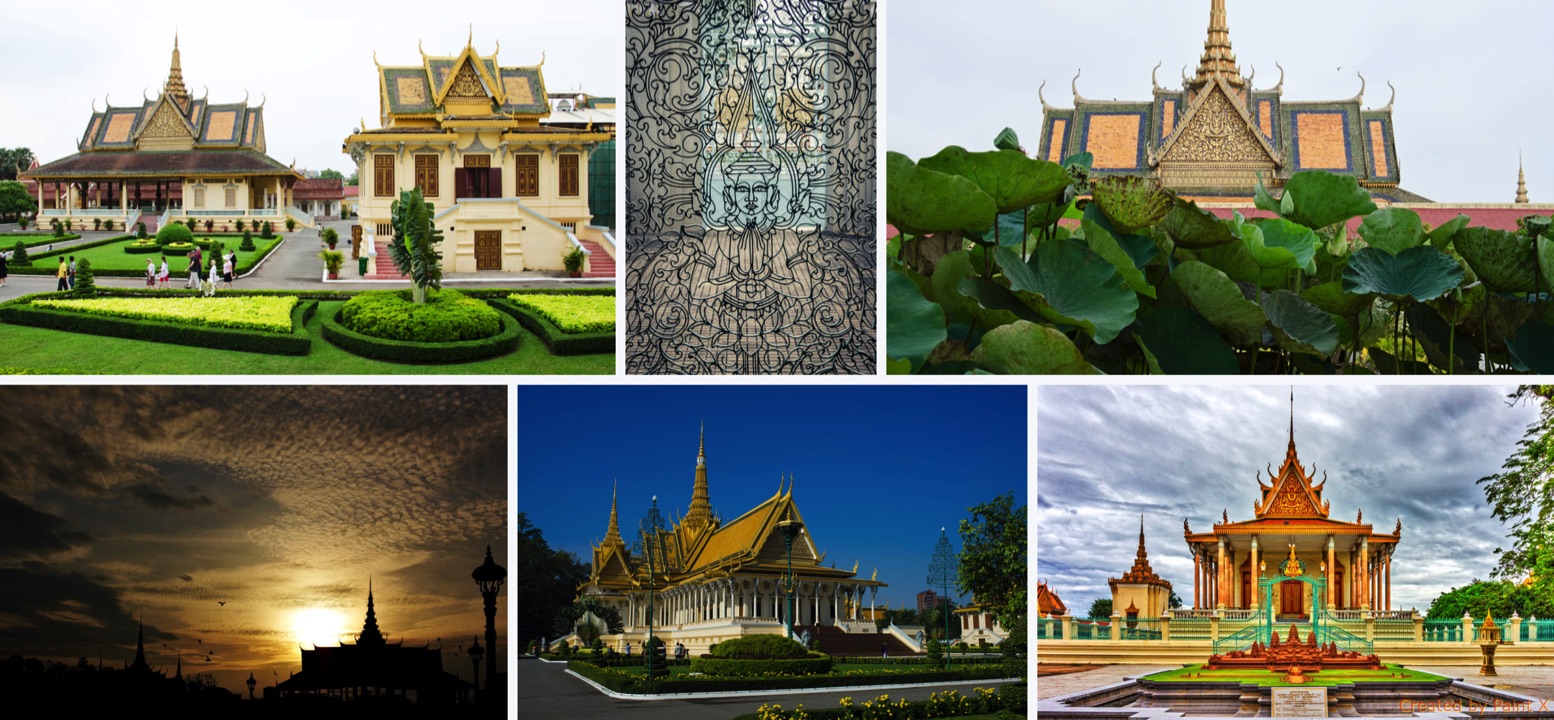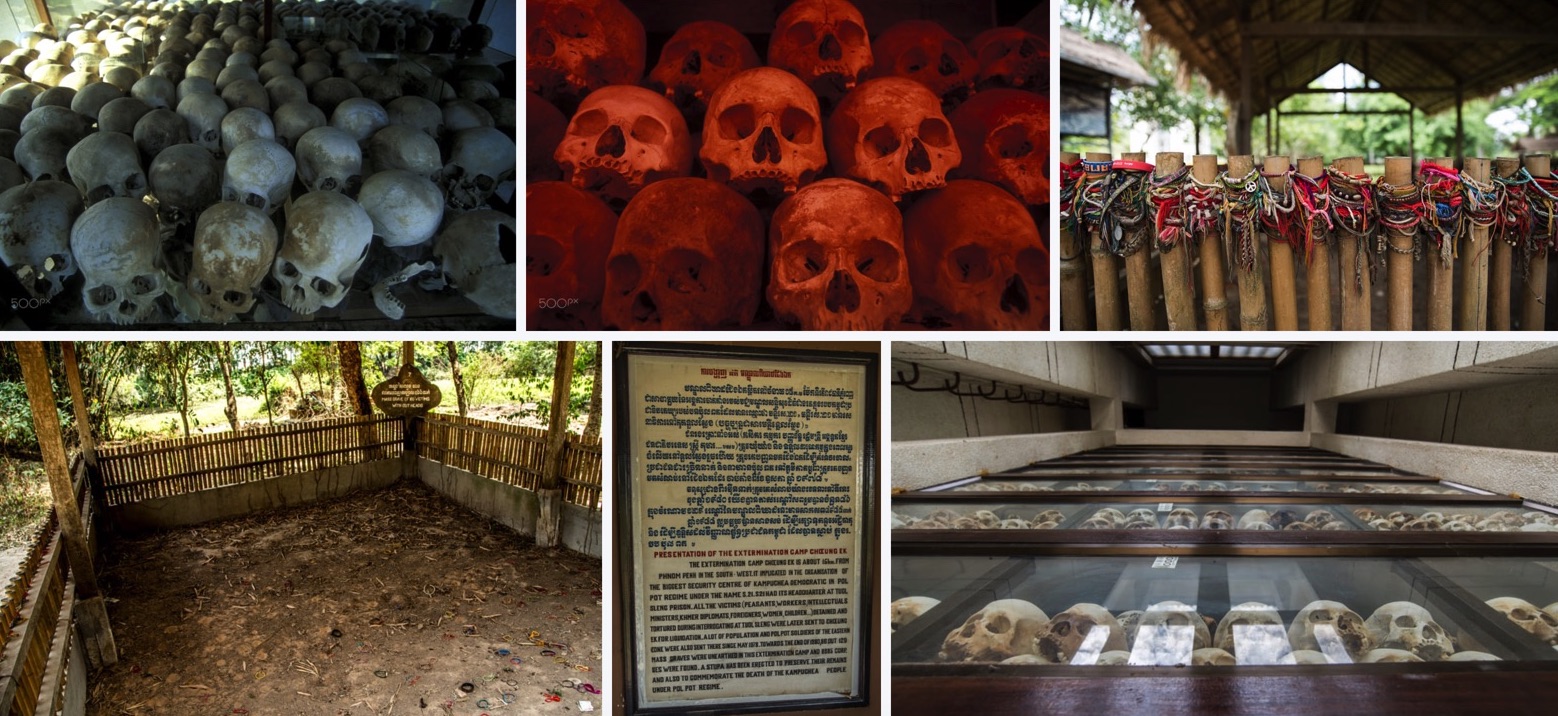Phnom Penh rose to become the capital of the Khmer kingdom in the 15th century, replacing much regretted Angkor. Legend has it that an old woman named Penh found four Buddha images that had come to rest on the bank of the Tonle river. A city grew up around the hill where she housed them for worship and came to be known as Phnom Penh (Hill of Penh)[/vc_column_text][vc_empty_space][vc_column_text] [/vc_column_text][vc_empty_space][vc_column_text]For centuries, Phnom Penh struggled to survive from repeated attacks of its two powerful neighbors, the Vietnamese and the Thais, until the arrival of the French in 1863, who made Cambodia a protectorate, and actually protected it from foreign invasions until their departure in 1953.
[/vc_column_text][vc_empty_space][vc_column_text]For centuries, Phnom Penh struggled to survive from repeated attacks of its two powerful neighbors, the Vietnamese and the Thais, until the arrival of the French in 1863, who made Cambodia a protectorate, and actually protected it from foreign invasions until their departure in 1953.
The French gave the city the layout that we know today. Phnom Penh has therefore a specific colonial feel: large boulevards bordered with old trees, elegant villas surrounded by lush gardens; however, a new visage of the capital seems to have been formed, as some modern structures are being built, a landmark of the modernity that the country is striving for.[/vc_column_text][vc_empty_space][vc_column_text]The capital indeed appears to enjoy a clearly higher standard of living than the rest of the country: large suv’s abound, the safe deposit box business is a huge success as people find ways to store their new wealth and international schools are filled with children of local wealthy families. Of course, that image doesn’t represent the majority of Phnom Penh’s inhabitants. The working class is certainly still much concerned with their daily earnings. Nonetheless, an impression of ease and of abundance is quite characteristic of the city today.[/vc_column_text][vc_empty_space][vc_column_text] [/vc_column_text][vc_empty_space][vc_column_text]I decided to walk to the riverside in front of the Royal Palace. It is a place where you can meet Cambodians from all walks of life: monks, intellectuals, businessmen, housewives, food vendors and beggars, drawn by the river’s fresh air and healing effect. At one corner, there was a small Buddhist shrine, where devotees offered candles and lotus flowers fixed on a fresh coconut. I noticed a middle-aged couple who was ceremoniously shaving the head of their young son. The later was sitting on a chair, eyes closed, hands joined in a gesture of reverence. Apparently, he was preparing to enter monkshood to fulfill his duty as a man and a son, bringing merit to his family, a tradition shared in all Theravada countries such as Thailand, Laos and Burma.[/vc_column_text][vc_empty_space][vc_column_text]For all Phnom Penh’s interesting sightseeing tours, its easy-going markets, bars, restaurants and the seemingly carefree laughter of its youth, I could still not forget the tragic events that have killed one quarter of this country’s population less then half a century ago. I entered a bicycle shop to to rent a bike and take a ride. The shop keeper, a young girl in her early twenties didn’t know how to get to my destination. She had never been to the Choeung Ek Killing Field, a museum of her country’s past genocide just 13km away, it’s probably a part of history she prefers not to know.[/vc_column_text][vc_empty_space][vc_column_text]Choeung Ek Killing Field was surrounded by serene rice fields and villages. At first glance, the gracious memorial tower situated at the center of the site didn’t appear horrible at all, until I saw the pyramid of skulls with thousands of victims who had been killed at this site during the Khmer Rouge’s regime. My audio guide led me through all the spots of mass graves then back to the memorial tower. There were no words to describe the feeling resulting from touring the site. The entire site was a frightening display of the darkest side of human psyche, where circumstances turned people into killing machines, incapable of connecting with the most basic human conscience: that of the value of life.[/vc_column_text][vc_empty_space][vc_column_text]
[/vc_column_text][vc_empty_space][vc_column_text]I decided to walk to the riverside in front of the Royal Palace. It is a place where you can meet Cambodians from all walks of life: monks, intellectuals, businessmen, housewives, food vendors and beggars, drawn by the river’s fresh air and healing effect. At one corner, there was a small Buddhist shrine, where devotees offered candles and lotus flowers fixed on a fresh coconut. I noticed a middle-aged couple who was ceremoniously shaving the head of their young son. The later was sitting on a chair, eyes closed, hands joined in a gesture of reverence. Apparently, he was preparing to enter monkshood to fulfill his duty as a man and a son, bringing merit to his family, a tradition shared in all Theravada countries such as Thailand, Laos and Burma.[/vc_column_text][vc_empty_space][vc_column_text]For all Phnom Penh’s interesting sightseeing tours, its easy-going markets, bars, restaurants and the seemingly carefree laughter of its youth, I could still not forget the tragic events that have killed one quarter of this country’s population less then half a century ago. I entered a bicycle shop to to rent a bike and take a ride. The shop keeper, a young girl in her early twenties didn’t know how to get to my destination. She had never been to the Choeung Ek Killing Field, a museum of her country’s past genocide just 13km away, it’s probably a part of history she prefers not to know.[/vc_column_text][vc_empty_space][vc_column_text]Choeung Ek Killing Field was surrounded by serene rice fields and villages. At first glance, the gracious memorial tower situated at the center of the site didn’t appear horrible at all, until I saw the pyramid of skulls with thousands of victims who had been killed at this site during the Khmer Rouge’s regime. My audio guide led me through all the spots of mass graves then back to the memorial tower. There were no words to describe the feeling resulting from touring the site. The entire site was a frightening display of the darkest side of human psyche, where circumstances turned people into killing machines, incapable of connecting with the most basic human conscience: that of the value of life.[/vc_column_text][vc_empty_space][vc_column_text] [/vc_column_text][vc_empty_space][vc_column_text]“The choice of the divine bird Garuda and the divine serpent Naga on the roof of the memorial tower is symbolically very significant” said the tour guide. “In mythology, they are eternal enemies. Therefore, when they are used together as ornaments, they stand for a strong desire for reconciliation and peace.”[/vc_column_text][vc_empty_space][vc_column_text]Indeed, this reconciliation spirit had been an attitude adopted by Cambodians in order to be able to move on, keep their smiles and rebuild their country. That’s how Phnom Penh has managed to put traumatized memories into museums and books, looking ahead to the future, and living life to the fullest now.[/vc_column_text][vc_empty_space][vc_column_text]
[/vc_column_text][vc_empty_space][vc_column_text]“The choice of the divine bird Garuda and the divine serpent Naga on the roof of the memorial tower is symbolically very significant” said the tour guide. “In mythology, they are eternal enemies. Therefore, when they are used together as ornaments, they stand for a strong desire for reconciliation and peace.”[/vc_column_text][vc_empty_space][vc_column_text]Indeed, this reconciliation spirit had been an attitude adopted by Cambodians in order to be able to move on, keep their smiles and rebuild their country. That’s how Phnom Penh has managed to put traumatized memories into museums and books, looking ahead to the future, and living life to the fullest now.[/vc_column_text][vc_empty_space][vc_column_text]
Traveling to Cambodia?
Cambodia is a beautiful and an amazing destination to plan a vacation to, nestled between Thailand, Vietnam and Laos and its a wonderful country with lots of amazing things to see and to do. Remember to plan your trip in right time and do not forget to explore Phnom Penh, a city that has too m much history behind itself. For more trip idea you may plan a Cambodia tours and or learn more about Phnom Penh holidays on here.[/vc_column_text][vc_empty_space][/vc_column][/vc_row]

